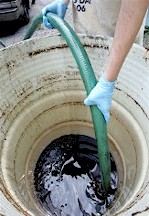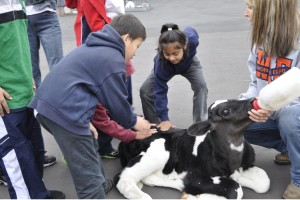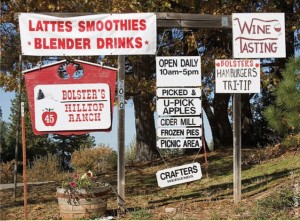 http://www.sacbee.com/2011/10/28/4012891/uc-davis-study-questions-link.html
http://www.sacbee.com/2011/10/28/4012891/uc-davis-study-questions-link.html
Fast food alone cannot be blamed for high obesity rates among people with low incomes, according to a new UC Davis Center for Healthcare Policy and Research study.
The research calls into question stereotypes that have led some cities in Southern California to cite obesity when passing laws limiting or banning new fast-food restaurants in poorer communities.
Nutritionists and food policy experts, however, said that doesn’t let fast food off the hook – and at least one of the UC Davis researchers agreed.
“I’m not a big fan of fast food,” said J. Paul Leigh, lead author of the study, which will be published in Population Health Management in December. “I’m sure that fast food in general has a big effect on obesity. This research does not contradict that.”
It does challenge the notion that those with low incomes eat more fast food than those with higher incomes.
Health economists Leigh and co-author DaeHwan Kim analyzed data from the mid-1990s and compared household income with visits to fast-food and full-service restaurants.
Rather than finding fast-food visits going down with income, they found visits peak at $60,000 in income, before falling slightly.
“They (people with low incomes) are not spending as much on fast food as lower-middle income or middle income,” Leigh said. “Just to say, ‘Fast food is the sole problem,’ that’s not where the sole problem is.”
Others said the study needs more careful analysis.
“It would be a big mistake to look at the results of this report and say the environments people live in don’t matter, because they do,” said Micah Weinberg, a senior policy adviser at the Bay Area Council who works on public health issues.
The study doesn’t cover what else people eat, nor separate out the rural poor, who may not have access to fast-food restaurants.
It’s also important to look at what else people eat and what other foods are available to them, Weinberg said.
“Is your neighborhood full of 7-Elevens or is it full of Whole Foods?” he asked.
The former is dominated by what he called “convenience store foods,” including highly sweetened beverages.
Those drinks are a problem in obesity, agreed Leigh, although that wasn’t specifically mentioned in his paper.
Adjusted for inflation, the price of soda has actually gone down over the past 30 years, and a 2-liter bottle of name brand Coke may be sold more cheaply than the same amount of water, Leigh said.
“I favor some sort of tax on soda pop with sugar,” he said.
To really make a difference, better-quality foods have to be made available in lower- income neighborhoods.
“If you go to places in Sacramento, it’s harder to get anything in the lowest of low- income (communities),” said Judith Stern, a nutrition professor at UC Davis and a nationally recognized expert on obesity.
“I think we need to make food available in low-income neighborhoods,” she said, meaning wholesome, high-quality foods.
She acknowledged the difficulties working people with low incomes have.
“If you could cook at home, it would be cheaper,” she said. “But where do you have the time?”
Leigh and Kim’s study showed other patterns. Among them:
• People with more education were more likely to go to full-service restaurants.
• Smokers were more likely to go to fast-food restaurants.
• People who worked longer hours were more likely to eat out.
• Men were more likely than women to eat out.
© Copyright The Sacramento Bee. All rights reserved.
Call The Bee’s Carlos Alcalá, (916) 321-1987.








